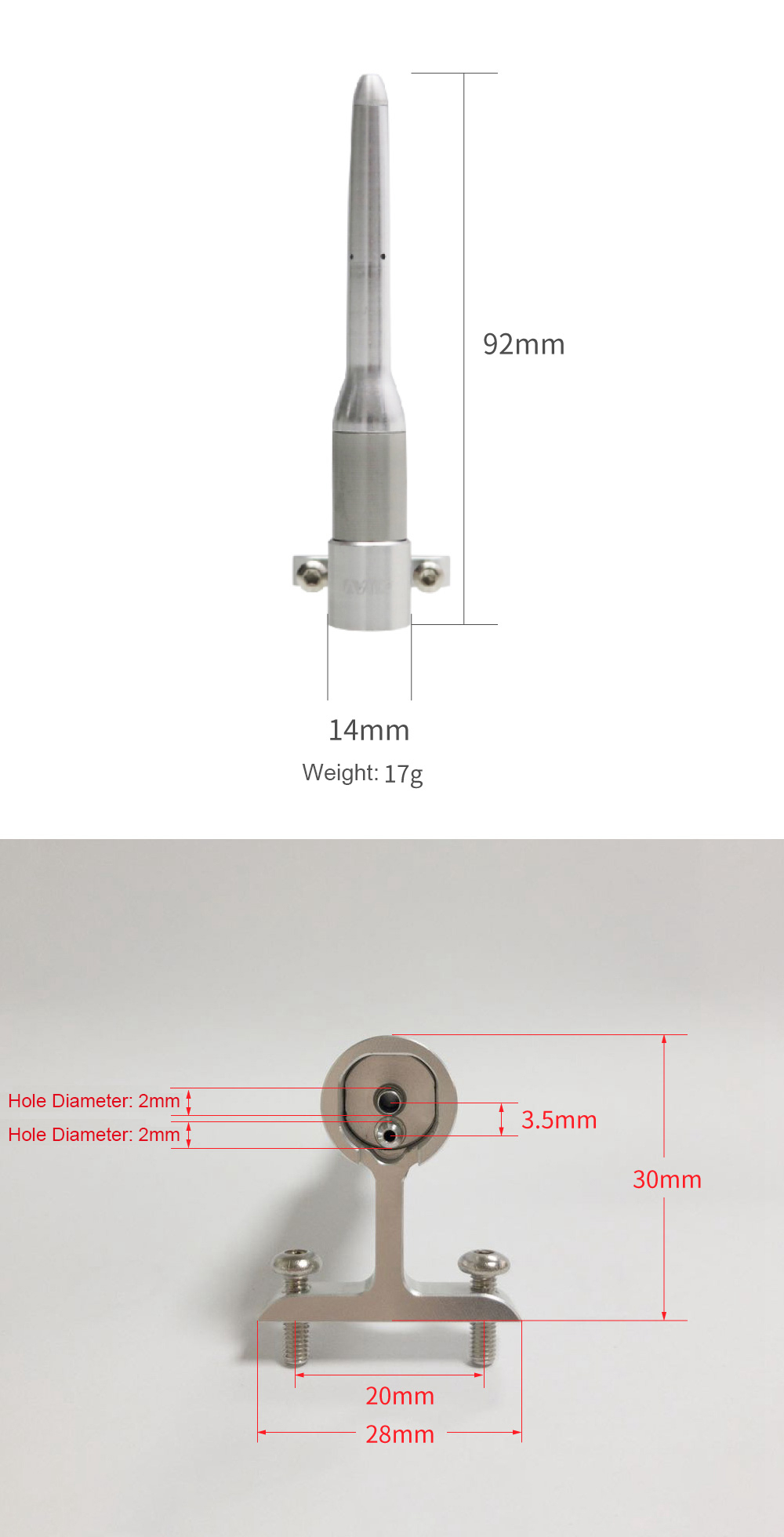
| Quantity | 3+ units | 10+ units | 30+ units | 50+ units | More |
|---|---|---|---|---|---|
| Price /Unit | $28.46 | $27.88 | $27.01 | $25.85 | Contact US |
 T-one L/G Controller Electric Landing Gear Controller Brake Correction ABS Adjustment with 1.14-inch LED Screen
$96.21
T-one L/G Controller Electric Landing Gear Controller Brake Correction ABS Adjustment with 1.14-inch LED Screen
$96.21
 SKYRC GSM020 Speed Meter GNSS Performance Analyzer Bluetooth4.0 for RC Cars and Drones Support for GNSS PA App
$70.36
SKYRC GSM020 Speed Meter GNSS Performance Analyzer Bluetooth4.0 for RC Cars and Drones Support for GNSS PA App
$70.36
 Freewing BlueBridge Lite Starter Version Bluetooth Adapter for Freewing Flight Assistant APP Operation
$15.37
Freewing BlueBridge Lite Starter Version Bluetooth Adapter for Freewing Flight Assistant APP Operation
$15.37
CUAV Aircraft Pitot Tube With Silicone Tubes For Fixed Wing Drone Flight Controller Accessories
Package Included:
- 2 x Silicone Tubes
- 1 x Pitot Tube
Note: Other items mentioned below are not included, for demonstration purposes only.
Airspeed Meter Calibration Introduction:
http://plane.ardupilot.com/wiki/calibrating-an-airspeed-sensor/
Attention:
Electronic equipment is a product with high technical content. When your equipment fails, please carefully check the wiring and power supply voltage.
Install Pitot Tube:
You can DIY pitot tube.
It can be done with two refills. The dynamic tube is directly installed outside your aircraft, the static tube is plugged, and then 4 small holes of about 0.5-1mm are made on the side.
When you install the airspeed sensor on the plane, use this pitot tube kit. The kit includes two pipes, a static pipe (the port is sealed and a small hole on one side) and a dynamic pipe (the straight-through pipe, not sealed). Two tubes can be placed side by side. On EasyStar, you need to pass them through the foam in front of the cockpit so that they can be exposed to the airflow. Make sure that the hole on the side of the tube is not covered. They should extend at least 1 cm from the nose. First connect the silicone tube behind the pitot tube to the air pressure sensor. The silicone tube from the straight tube should be connected to the upper port, and the elbow tube should be connected to the lower port. Drill or cut a small cut in the foam and push the Pitot tube to the front.
If you have a propeller in front of your aircraft, the dynamic tube must be pressed onto a wing, or at least below the fuselage, to avoid propeller airflow. The static tube can be installed anywhere.
Check Operations:
You can use APM Planner or other ground stations to read the airspeed count value. Blow into the pitot tube and observe the response. Zero and small oscillations (2-3) are normal in still air. The airspeed changes with the square root of the pressure, so the change at close to zero pressure difference is very small, and a larger pressure change is required to produce the estimated speed change during flight. If you see mostly 0, 1, 2, and occasionally bounce to 3 or 4, think it is normal. You will not see such changes during flights.